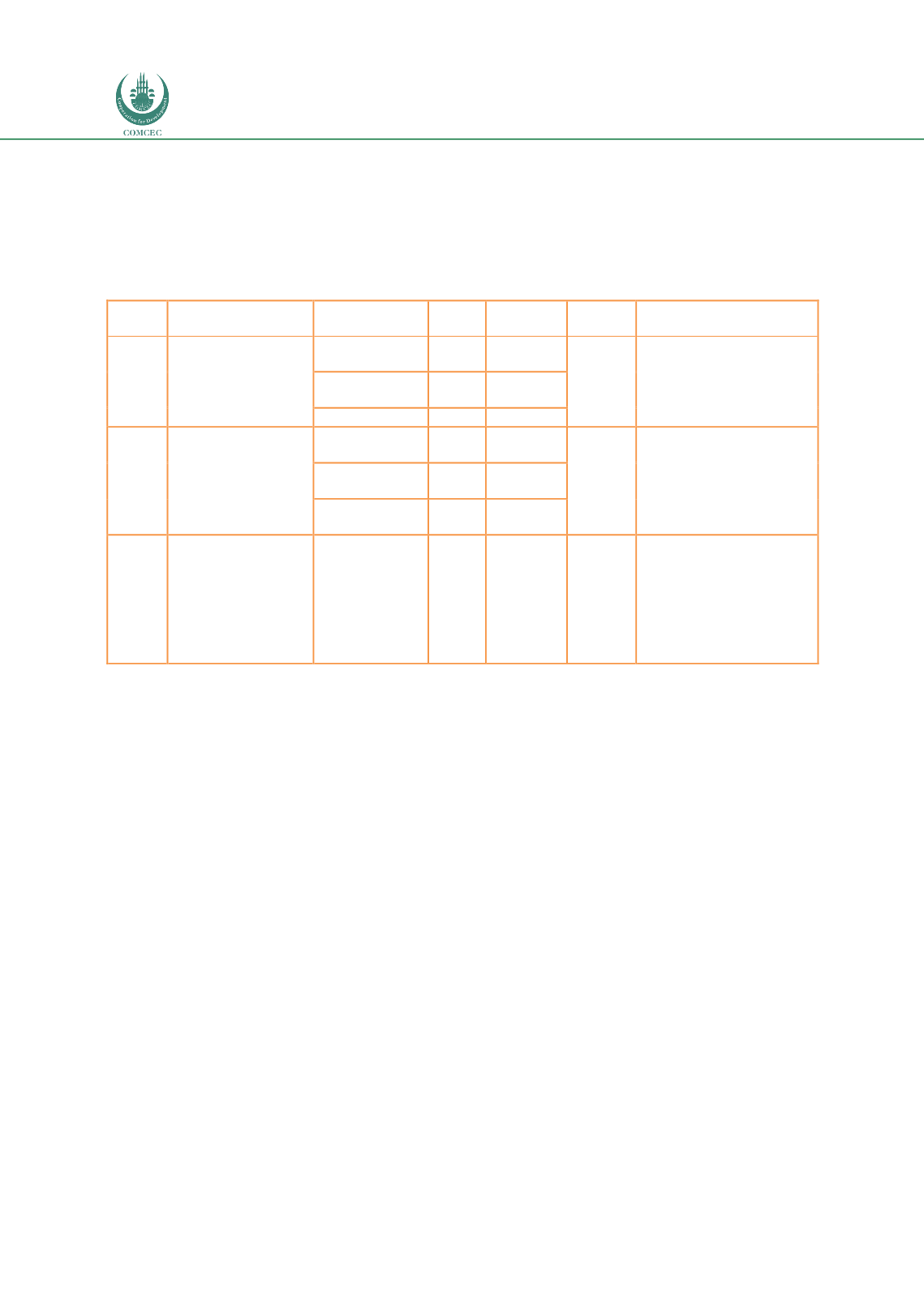

Improving Transnational Transport Corridors
In the OIC Member Countries: Concepts and Cases
158
Dry runs on INSTC routes
In July – August 2014, the Federation of Freight Forwarders Association in India (FFFAI)
conducted two dry runs on two INSTC routes with two physical 20ft shipping containers. The
results of the dry runs are summarised in the following table.
Table 55: INSTC vs traditional route
Route
Origin
–
Destination
Sub route
Mode
Distance
Transit
time
Total cost
1
Nhava Sheva (India)
–
Baku (Azerbaijan)
Nhava Sheva –
Bandar Abbas
Sea
1,265 nm
28 days
USD 3,132
Bandar Abbas
– Astara
Road
1,900 km
Astara - Baku
Road
320 km
2
Nhava Sheva (India)
–
Astarakhan (Russia)
Nhava Sheva –
Bandar Abbas
Sea
1,265 nm
41 days
USD 5,245
Bandar Abbas
– Amir Abad
Rail/
road
1,500 km
Amir Abad –
Astarakhan
Sea
1,000 nm
Tradi-
tional
Nhava Sheva (India)
– St. Petersburg
(Russia)
Nhava Sheva –
Hamburg
Hamburg –
St. Petersburg
Sea
8,675 nm
30 days
USD 955 - 1,400 per
20ft dry container
USD 1,500 - 1,900 per
40ft dry container
USD 2,000 – 2,500 per
40ft Reefer for
perishables
Source: Fimotions (2017), analysis on the information provided in (FFFAI, 2014).
The transit time for route 1 is almost the same with that of the traditional route and the transit
time for route 2 is 50% longer. During the dry runs several circumstances happened such as
bad weather in Arabian Sea and unavailability of custom officers in Baku for cargo clearance.
However, these do reflect circumstances that can happen in reality.
















